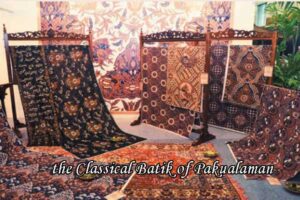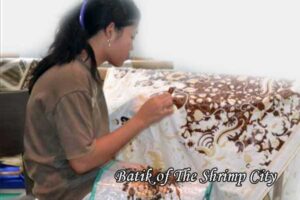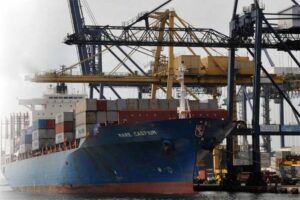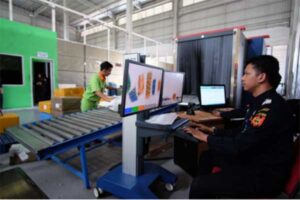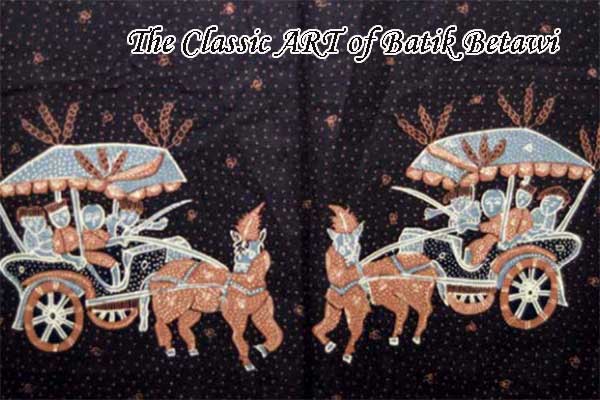
The Embryo of Batik Betawi borned in Jakarta, formerly known as Batavia region, it was developed since 1930’s until 1940’s. Batik businesses are carried out either in individual scale within home industries or bigger industrial scale.
When telling her story in searching “classical batik” in Jakarta commonly known as clasical batik, Emma Amalia Agus Bisrie explained, that she does not only collect batik Betawi, but also as a collector of Kain Antik Nusantara, as well as various objects of arts and artifacts. Coleccting batik Betawi antique or oldies batik is actually much more difficult rather than that of other batik from other regions of Java.
In the past, batik produced in several scattered areas , such as Karet Tengsin that produced printed batik and hand-writing batik, Palmerah located on Berdikari Street, Bendungan Hilir, Kebun Kacang and Kebayoran Lama. The famous motives were Pucuk Rebung and Buket.
At that time, Betawi people have recognized various techniques of batik, either the simple or too delicate batik technique. They are also good in using natural dyes, such as from Morinda citrifolia (Mengkudu) root for the red color. The quality of red color of the Morinda citrifolia, also known as batik Palmere, even close to the red color of batik Lasem, “said the mother of 5 sons.
Emma who focusing on Batik Betawi in the last three years continued, “After 1970s, entering an ‘80s and early ‘90s, Jakarta land prices was higher and higher. In line with the increased awareness of the preservation of the environment, The local government of Jakarta began to regulate areas where batik industry is existed. Batik waste which is dumped into the river, begining disrupted the environment and social life along the stream area. Eventually the industry run clandestinely, and gradually the industry shifted from Jakarta to the outer regions of Jakarta, such as Tangerang, Bekasi and Depok”.
When batik recognized as an intangible cultural heritage by UNESCO in 2011, it also bring a positive effects to the development of Batik Betawi, particularly in Pulogadung area (East Jakarta). Betawi figures Ridwan Saidi returned to strive for baik Betawi batik to rebound, through Betawi originated flora and fauna motives such as fish, Scaly-breasted birds, Ulung Ulung bird, and crocodiles.
The motives enriched by various historical locations in Jakarta, such as Ciliwung River flows, Monas, Jembatan Gantung, Betawi traditional house, kebaya house model, warehouse models, Salak model, Delman Hias, Becak, Ondel-Ondel, and garnish teeth.
Since 90’s there are mutual cooperation betweeen agencies such as with Taman Ismail Marzuki (TIM), to produce batik with Jakarta icons such as ondel-ondel, delman, Bondel Birds, all of which are freely made to enrich the Betawi batik patterns.
I also proposed to Yayasan Batik Indonesia, to show that the Batik Betawi is exists, so it needs to be preserved. The result now there are eight recognized location as the site of originated batik Jakarta, namely Seraci Batik Betawi, Mawar Batik Betawi, Kebon Bawang Batik Betawi, Gandaria Batik Betawi, Warung None Batik Betawi, Surya Cipta Batik Betawi, Terogong Batik Betawi, and Milla House.
“I’m from Batik Milla since 1990’s have moved our business location to West Bekasi area, and in collaboration with 12 batik craftsman, we produce batik tulis which is takes around 3 weeks to 1 month for one fine batik tulis. While for Batik Cap (Batik Stamp) can be finished within 4 days for one fabric.
Source:Seni Klasik Batik Betawi
The Classic ART of Batik Betawi


